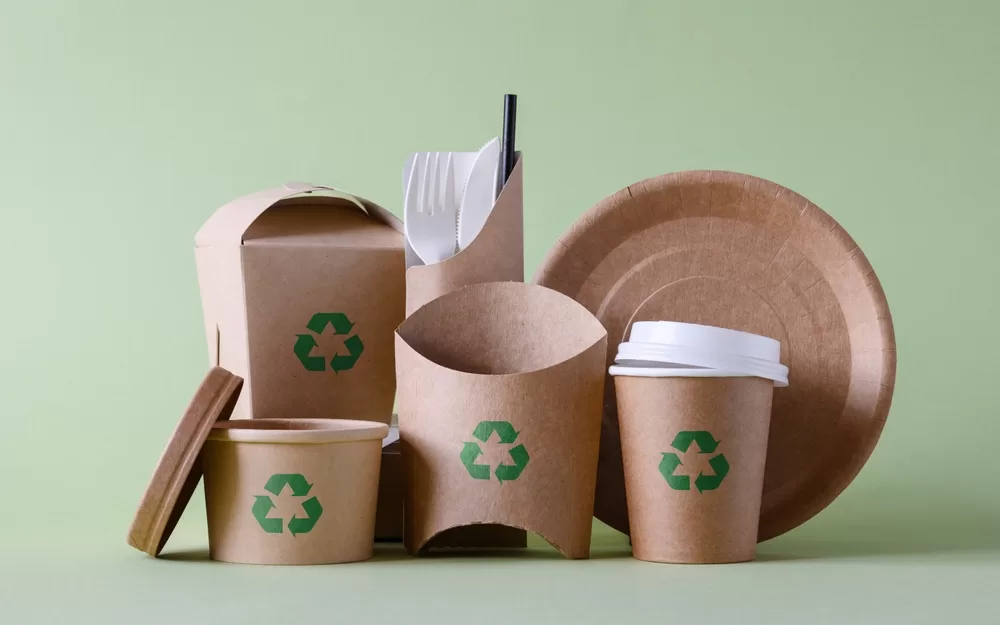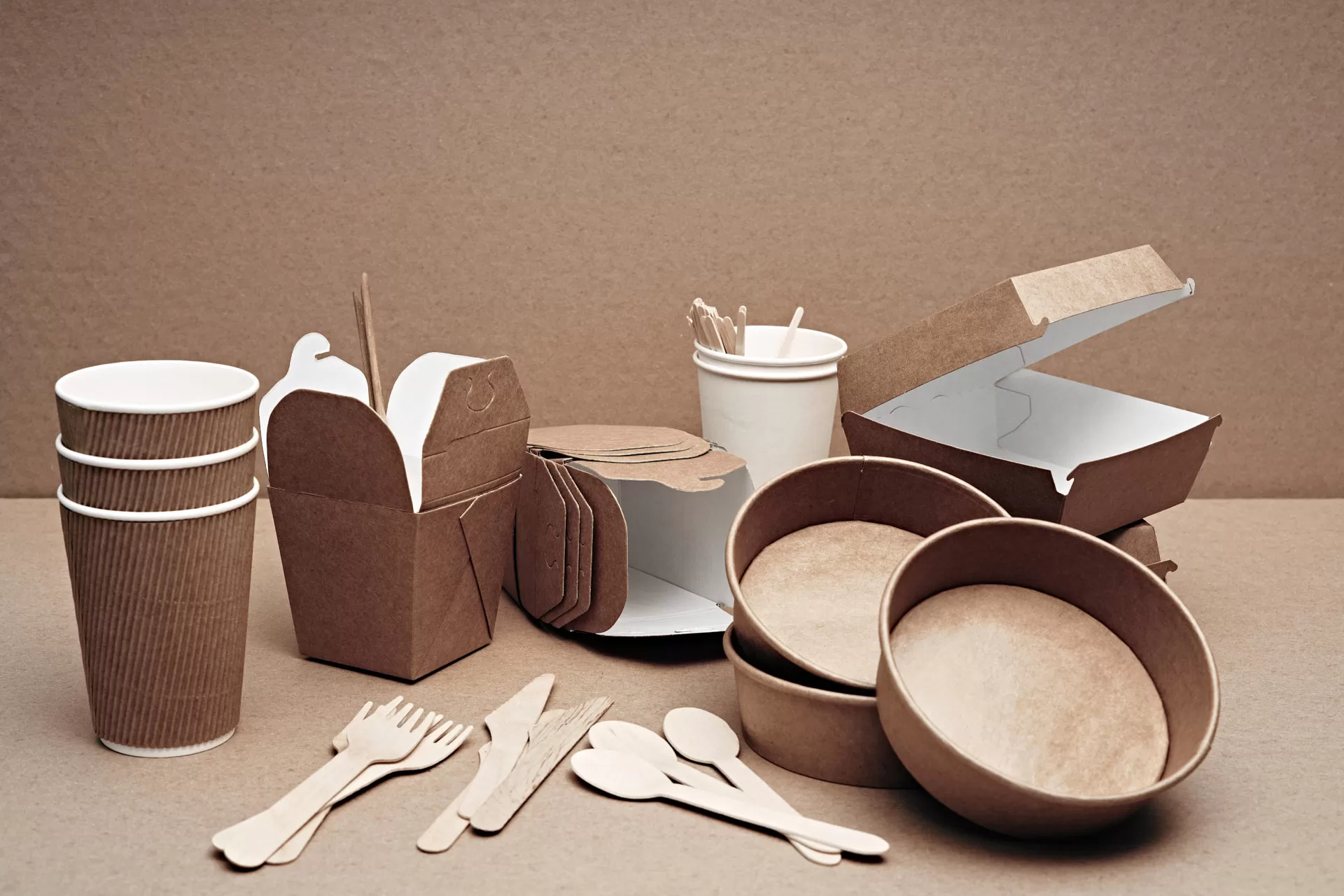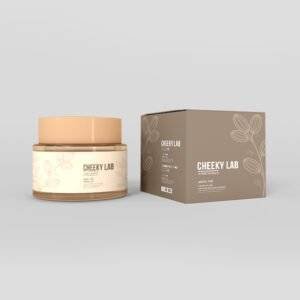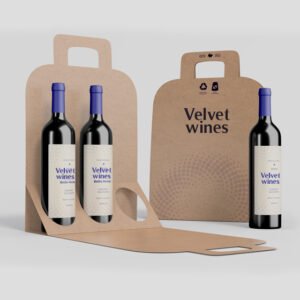Biodegradable packaging is an essential component when it comes to sustainable solutions. It represents a pivotal shift towards eco-friendly choices. When we talk about biodegradable options, it refers to packaging materials that can naturally break down into harmless components, leaving minimal environmental impact. In an era where environmental consciousness is significant, biodegradable solutions emerge as a beacon of responsible consumption.
This blog serves as a guide to sustainable packaging, its types and processes, and the multitude of advantages it offers. Let us understand how this innovative approach is reshaping the packaging industry and contributing to a greener, better future.
What is Biodegradable Packaging?
This packaging refers to materials designed to naturally decompose and return to the environment without causing harm. In contrast with traditional packaging, which can last for centuries, biodegradable alternatives decompose into organic substances as a result of microorganisms at work. These substances include cellulose, starch, and other organic compounds, as well as polymers derived from plants.
Biodegradable solutions are extremely important because they can help with the growing environmental issues that are caused by traditional packaging. Biodegradable substances are essential for lowering the amount of waste that ends up in landfills and the ocean because they reduce the use of non-biodegradable materials like plastic.
This environmentally friendly method reduces packaging’s negative effects on the environment, supporting international efforts to promote sustainability. Hence, this type of packaging is a fundamental element of the circular economy by facilitating the shift towards a more conscientious and peaceful coexistence with our planet, providing a viable option in the pursuit of ecologically friendly packaging substitutes.
Types
Paper Packaging
Paper packaging is a common example of a biodegradable alternative. Derived from renewable resources like wood pulp, paper packaging offers a sustainable solution with a minimal ecological footprint. Its biodegradability ensures that, when disposed of, it breaks down naturally, returning to the environment without causing harm.
Paper packaging offers versatility and recyclability and serves diverse purposes, from wrapping containers to creating custom box packaging, aligning with the demand for eco-friendly options. Its popularity stems from both its recyclability and compostability, making it a popular choice to reduce the environmental impact of packaging materials. Paper packaging embodies a harmonious balance between functionality, sustainability, and environmental responsibility.
Cellulose Packaging
Plant cell walls are the source of cellulose packaging, which is a biodegradable element in environmentally friendly packaging. Made of fibres derived from wood, cotton, or hemp, cellulose-based materials can simulate the properties of conventional plastics without harming the environment. By naturally disintegrating due to microbial activity, these materials lessen their persistence in the environment.
Cellulose packaging, which is usually transparent and versatile, is used for a variety of purposes, including containers and wraps. Cellulose packaging, a renewable resource, reflects on how plant-based solutions can help create a more sustainable and environmentally friendly packaging industry by reducing non-biodegradable waste and providing a competitive alternative to conventional plastics.
Seaweed Packaging
Using marine resources, seaweed packaging is an excellent biodegradable solution. This creative packaging blends sustainability and adaptability by using seaweed extracts, like alginate. Materials made from seaweed are naturally biodegradable, meaning they have little effect on the environment. Seaweed packaging is flexible in design and application, with applications ranging from food packaging to agricultural uses, in addition to being environmentally friendly.
Seaweed packaging is an example of how to use the abundance of the ocean to produce biodegradable materials, supporting a circular economy and reducing dependency on conventional, less sustainable options.
Mushroom Packaging
Mycelium packaging, commonly referred to as mushroom packaging, is another biodegradable substitute. It is made from mycelium, the root structure of fungus, and functions as a natural binder. By allowing mycelium to grow around agricultural waste, mushrooms can produce packaging that is both lightweight and durable. Mushroom packaging is compostable and biodegradable, so disposing of it won’t harm the environment.
This creative solution, which is well-known for its adaptability, is highly used in product packaging. Packaging made of mushrooms shows how natural processes can be used to create sustainable alternatives, demonstrating that this type of fungus can offer the packaging industry environmentally friendly solutions.
Get Your Custom Boxes Today!

How Biodegradable Packaging is Made?
- Choosing Materials
Choosing materials for biodegradable packaging involves a meticulous selection process centred on sustainability and environmental impact. Manufacturers opt for renewable resources such as plant-based polymers, starch, cellulose, or algae-derived substances. The key is to ensure that the chosen materials possess inherent biodegradability, allowing them to break down naturally.
Additionally, consideration is given to the environmental footprint of material production and its life cycle. By prioritising materials derived from renewable sources and minimising ecological impact, the manufacturing of biodegradable packaging aligns with the ethics of sustainability, fostering responsible practices throughout the entire production chain.
- Collection of Raw Materials
While creating a sustainable packaging option, the collection of raw materials is a crucial step that needs attention and expertise. This phase typically includes the cultivation and harvesting of plant-based materials like cornstarch, sugarcane, or bamboo. Additionally, the collection of agricultural waste, such as wheat straw or bagasse, is integral to certain biodegradable packaging processes.
By emphasising sustainable harvesting practices and selecting materials that are abundant and easily replenished, the collection of raw materials ensures that the foundation of biodegradable packaging aligns with ecological balance and reduces dependence on finite resources, contributing to a more sustainable approach to material sourcing.
- Processing
When it comes to making biodegradable packaging, the next step after selecting the materials and gathering raw ingredients is the processing stage. This involves using various methods and machinery to turn those chosen materials into the final packaging product.
It is a crucial step that is major and consists of specialised techniques that are put together to create environmentally friendly packaging out of the raw materials.
Precision in this stage is crucial to ensuring the packaging serves its purpose effectively while adhering to sustainability objectives. The goal is to keep the process efficient and minimise any negative impact on the environment.
- Labelling
Labelling biodegradable packaging involves informing customers in a simple manner about the product’s eco-friendliness. Labels usually emphasise how the packaging is biodegradable and uses renewable resources. By educating customers about the advantages of selecting this type of packaging for the environment, it encourages thoughtful and sustainable purchasing decisions.
In order to encourage transparency and guarantee that consumers can make knowledgeable decisions that are consistent with their environmental values, the labelling process is crucial. Hence, brands nowadays focus on sustainable packaging and also opt for environmentally friendly labels to convey a safe and greener product to their eco-conscious customers.
- Finishing Touches
Adding the finishing touches to biodegradable packaging involves the final steps to ensure quality and functionality. This phase includes refining the appearance, reinforcing durability, and making sure the packaging meets industry standards. It’s the last bit of care before the product heads out into the market. Whether it’s ensuring a smooth surface or strengthening the structure, these finishing touches aim to deliver a well-crafted and reliable packaging solution.
Discover How Custom Packaging Elevates Your Brand Image
Our Top-Rated Products
Why Choose Biodegradable Packaging?
Opting for biodegradable options for packaging is a conscientious choice driven by several compelling factors. Firstly, its positive environmental impact sets it apart, as biodegradable materials break down naturally, reducing the persistent burden of non-biodegradable waste. Additionally, there is a notable shift in consumer preferences, with an increasing demand for sustainable and eco-friendly alternatives. As consumers become more environmentally aware, brands responding to this preference by adopting biodegradable packaging gain a competitive edge.
Moreover, the adoption of biodegradable packaging aligns with the rising importance of corporate responsibility as businesses strive to minimise their ecological footprint and contribute to a greener and more sustainable future.
Therefore, choosing a biodegradable source for packaging solutions is a win-win strategy for brands looking for ways to make their way into the market with a solid foundation. This is a strategic decision that addresses environmental concerns, meets consumer expectations, and positions businesses as socially responsible entities.
Environmentally Safe Packaging: What Are the Advantages?
Environmental Benefits
The advantages of greener packaging are incredible, with significant environmental benefits at the forefront. Biodegradable materials, in contrast to traditional packaging, naturally decompose, reducing the pollution of non-biodegradable waste in landfills and oceans. This degradation process contributes to soil enrichment and minimises the carbon footprint associated with the production and disposal of packaging.
By choosing biodegradable options, brands and consumers both actively participate in preserving ecosystems, fostering biodiversity, and mitigating the environmental impact typically associated with the usage of harmful packaging materials, thus paving the way towards a more sustainable and ecologically balanced future.
Consumer Preferences
Consumer preferences are now more drawn towards sustainability, transcending product categories and encompassing a preference for eco-friendly packaging. In the current market landscape, consumers are increasingly opting for products packaged in sustainable materials, regardless of the nature of the items. This shift reflects a growing awareness and concern for environmental issues, prompting individuals to make choices aligned with their values.
Brands that adopt this demand for packaging respond to this evolving consumer sentiment, gaining favour and loyalty. The rise of sustainable packaging reflects a collective commitment to reducing ecological impact, influencing purchasing decisions, and steering the market towards more environmentally responsible practices.
Redefining Brand Image
Brands nowadays are focusing on gravitating towards biodegradable options for packaging their products. It not only redefines a brand image but also makes it more appealing and aligns with customer values. Recycling as well as upcycling—both phenomena are gaining popularity, and businesses are constantly looking for ways to offer packaging solutions that are highly recyclable but also recyclable so that they can be used for other purposes.
This commitment to eco-consciousness resonates with conscious consumers, leading to increased popularity and loyalty. It reflects a brand’s social responsibility and forward-thinking approach, creating a positive association that extends beyond the product itself. Redefining a brand’s image through sustainable packaging is not just a trend; it’s a strategic move that resonates with the values of today’s environmentally conscious consumers, fostering long-term brand success.
Future Trends in Packaging
Looking ahead, biodegradable packaging has to witness transformative trends and innovations. Emerging trends indicate a surge in research to develop even more sustainable materials, exploring options beyond traditional plant-based sources. Future packaging solutions may leverage advanced technologies like 3D printing to create customised, biodegradable designs.
The incorporation of smart packaging with embedded sensors for freshness tracking is another anticipated innovation. As consumer awareness deepens, there’s an increasing focus on transparent labelling and certifications. The future holds potential for circular economy models, encouraging the recycling of biodegradable packaging.
With a continued emphasis on sustainability, the packaging landscape is likely to witness a harmonious blend of functionality, aesthetics, and eco-consciousness, steering the industry towards greener and more innovative horizons.
Conclusion
Biodegradable materials used for packaging are already a practice and are still emerging within brands of all kinds. Printing and packaging solutions like Print Monkey are also offering a diverse range of sustainable packaging for every product industry without compromising on looks or quality.
If you are someone looking for affordable yet incredible packaging for your brand, then Print Monkey is the way to go! Explore a great world of creativity and endless possibilities and come up with exceptional packaging today.













